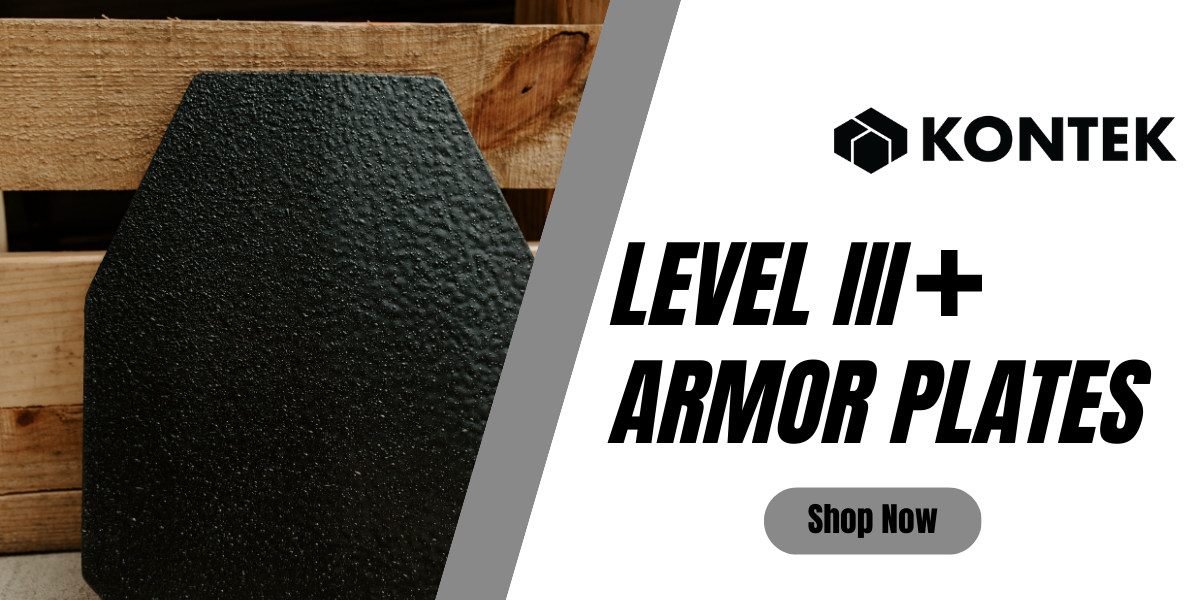
Close Quarters Battle (CQB) is where training meets consequence: practiced movements, clear comms, and decisive force stop threats quickly. CQB matters because when seconds count, preparation beats panic. This guide breaks down the definition, core principles, room-clearing drills, and the tools you’ll train with so you can make faster, safer decisions under pressure.
What Does CQB Mean?
CQB (Close Quarters Battle) refers to coordinated, team-based combat at very short range inside confined spaces such as rooms, stairwells, vehicles, and tight corridors.
You’ll also see the term CQC (Close Quarters Combat) used; CQB emphasizes disciplined team procedures and mission control rather than just individual close-range fighting.
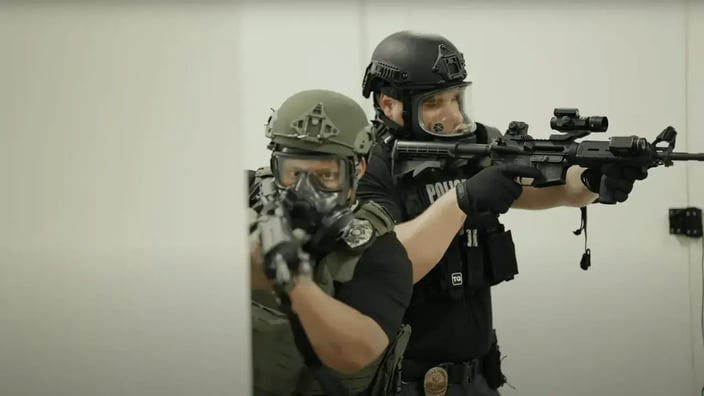
Typical missions:
- Building clearances
- Hostage rescue
- High-risk warrant service
- Raids and targeted entries
- Vehicle/interior interventions
The point is simple: control the space, limit collateral harm, and end the threat with trained, repeatable actions. When you train toward those outcomes, you shorten decision time and reduce avoidable mistakes.
3 Quick CQB Principles
Surprise — Create conditions the adversary does not expect so they cannot form a coordinated response. Use concealment, unexpected angles, and timing to induce hesitation and seize control.
Speed — Move decisively to shorten the enemy’s decision cycle and limit their options. Practice smooth transitions so speed is controlled, repeatable, and safe.
Violence of action — Deliver overwhelming, focused force at the decisive point to stop the threat immediately. This is a disciplined application of force, paired with clear target discrimination.
These three principles are the backbone of every effective CQB team. Train them, test them, and measure them.
Common CQB Tactics & Techniques
CQB tactics are predictable but unforgiving. Below are the methods most teams rehearse.
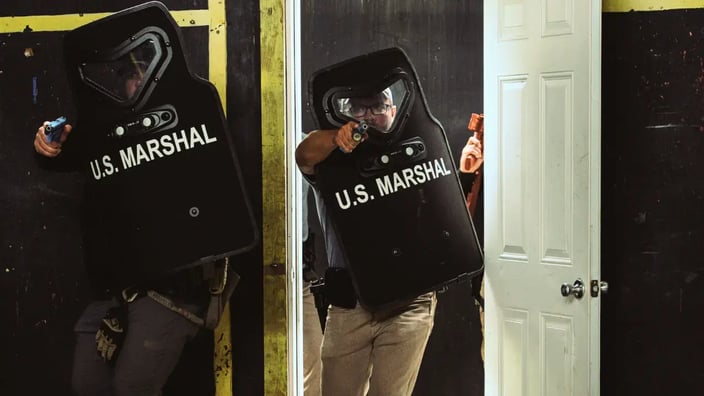
Room Clearing Methods
Deliberate clears protect evidence and civilians. Dynamic clears shock and dominate. Common techniques include slicing the pie for angled approaches, immediate action drills for surprise contact, and sector-based sweeps for multi-threat rooms.
Breaching & Entry
Match breach method to mission authority. Mechanical rams and pry tools are low-impact options. Ballistic breaching and shotgun breaching are fast but increase risk of overpenetration. Practice with tactical breach doors so you can repeat the run dozens of times per hour.
Movement Formations & Stacking
Stacks, columns, and lane formations assign fields of responsibility so team members don’t duplicate or miss sectors. Drill transitions until they’re automatic: moving from stack to room entry, from room entry to consolidation, from consolidation to maneuver.
Ballistic Shields & Weapon Ports
Shields increase survivability at the cost of mobility. Smaller shields let you clear faster; larger shields protect more but can slow the team. Weapons ports let you engage from behind cover, but they require training to be effective.
Here is a look at how shields are used in CQB training:
Training: How Teams Learn CQB
Real skill comes from repetition under stress.
Force-on-Force & Simunitions
Low-lethality force-on-force trains decision-making under pressure. It exposes communication breakdowns and target discrimination errors without live rounds. Use it early in your progression toward live-fire work.
Metrics & After-Action Reviews (AARs)
Measure door-to-first-contact, door-to-clear, comms errors per run, and safety violations. Keep AARs tight: 90 seconds to list 3 things that went well and 1 concrete fix. Data lets you track improvement instead of relying on gut feel.
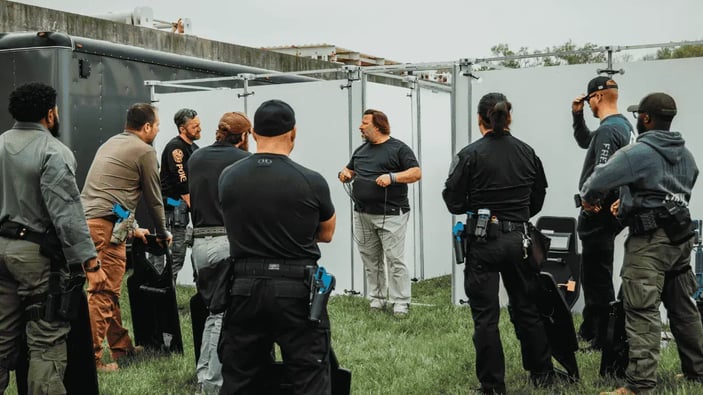
Tools and Gear for CQB
This is about what actually changes outcomes in training and operations.
Shoot House Training
Shoot houses teach you the feel of a fight. They recreate cluttered rooms, blind corners, and the dead space that makes a door feel hostile. Run enough repetitions in a realistic structure and the motions stop being conscious choices and become reflexes.
Permanent shoot houses are heavy-duty. Use them for full live-fire progressions. Modular shoot houses give you variety on a schedule. Swap walls, move a staircase, change furniture layouts between runs. That forces teams off rote memory and onto decision-making that scales across floor plans.
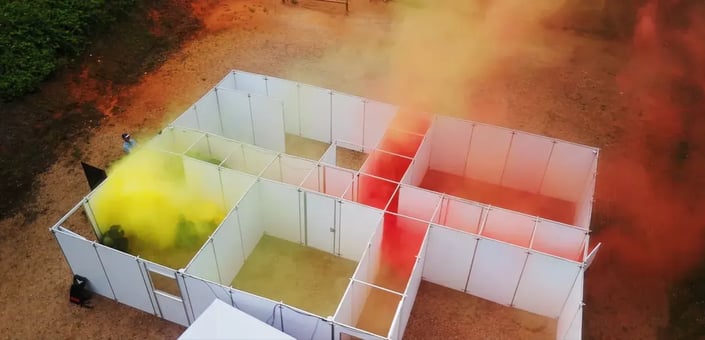
Objects for Cover & Tactical Walls
Moveable props mimic desks, couches, and partial walls so you can practice realistic sight lines and movement. They force you to spot false cover, judge concealment versus protection, and rehearse using real cover without being surprised.
Shooting barricades are simple but high-value tools. They give you cover and transition practice, teach line-of-sight management, and force rapid positional changes under simulated fire. Use multiple barricades at graduated heights to train mounting, dismounting, and target transitions.
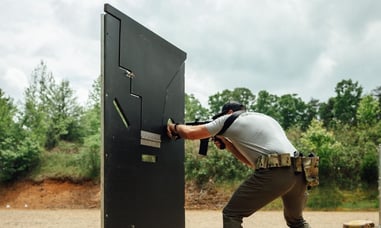
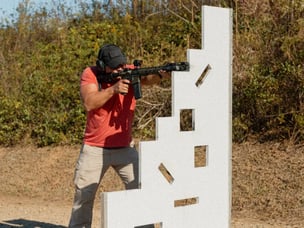
Weapons, Optics & Comms
Compact carbines, short-barrel rifles, and red-dot optics dominate CQB. Weapon-mounted lights and reliable headset comms are non-negotiable. Choose rounds with appropriate penetration profiles for populated environments.
Breaching Technologies
Mechanical rams, pry tools, shotgun breaching, and breach doors are all part of modern breaching toolkits. Breach doors are especially useful in repeat training cycles because they reset fast and conserve resources.
Shields & Protective Gear
Ballistic shields, plate carriers, helmets, and eye protection balance safety with mobility. Lighter kit increases speed; heavier kit increases survivability. Pick the balance that fits the threat.
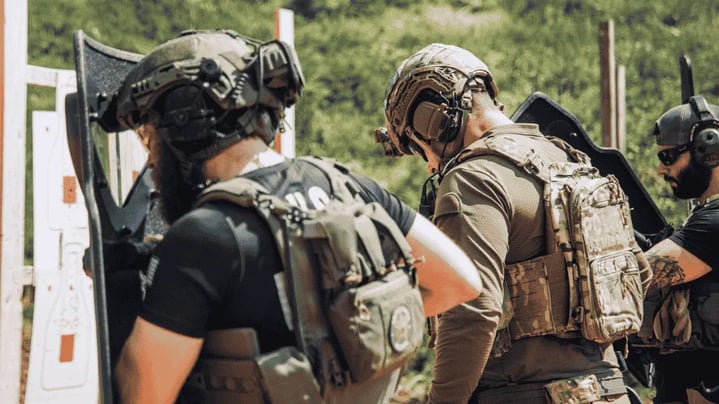
CQB for Law Enforcement Operations
Police CQB has different constraints: civilians, evidence, and legal risk.
Operational focus: Protect bystanders, preserve evidence, and meet legal standards. That means slower, deliberate entries when time allows, clear medical plans, and coordination with negotiators or EMS.
Training cadence: Frequent, short sessions that reinforce decision-making under legal constraints. Tabletop briefs, quick shoot house cycles, and legal debriefs keep teams sharp.
Equipment choices: Departments often use frangible or barrier-reducing rounds in dense areas, compact weapons for maneuverability, and shields sized for urban entry. Non-lethal options and negotiation tools are integral.
CQB for Military Operations
Military CQB scales differently: tempo, suppression, and integrated support are key factors.
Mission focus: Neutralize combatants quickly and enable follow-on operations. Expect integration with indirect fires, vehicle support, and casualty evacuation plans.
Training & force integration: Squad- and platoon-level rehearsals, live-fire lanes, and combined-arms drills build the tempo and coordination soldiers need.
Equipment & capabilities: Short-barrel rifles, breaching munitions, smoke and obscurants, and vehicle support. Sustainability and logistics factor into operational planning.
Here is a look at law enforcement and military experienced operators utilizing CQB:
Conclusion
CQB is not a slogan. It’s a set of repeatable actions and measured practices that let a team turn chaos into control. Focus on surprise, speed, and violence of action. Run drills that force you to rehearse transitions and comms. Measure performance, correct quickly, and pick gear that complements your intended mission.
Contact Kontek Industries
When training time matters, Kontek builds the gear that gets teams better, faster. Our tactical training solutions provide mobile, range-ready infrastructure, including modular shoot houses, configurable barricades, and breach-door kits, so you can run realistic, high-rep CQB drills and measure team performance.
Kontek’s Training Range Barricade is designed to be a cost-effective solution to provide strategic, safe, and realistic training for operators to replicate fire and movement from defensive positions in a light, rapid deployment package.
The Mobile Modular Shoot House is designed to provide realistic and effective training in Close Quarters Combat (CQB) with the use of simunitions and other non-live fire training means to help prepare your tactical team for their mission.
Frequently Asked Questions
What is the difference between CQB and CQC?
CQB (Close Quarters Battle) refers to coordinated, team-based operations in confined, built environments. CQC (Close Quarters Combat) usually describes individual-level close-range fighting skills and techniques. They’re often used interchangeably.
Where is CQB used?
CQB is used in law enforcement, military urban operations, corrections, and specialized security teams whenever threats are inside confined or built spaces.
Can civilians learn CQB?
Yes. Civilians can train CQB-style skills, but only in a tailored, legal, and safety-first program. As a private citizen you can learn the defensive subset: movement and clearing basics, use of cover, close-range marksmanship, decision-making under stress, and medical response.
What equipment is essential for CQB?
Common items include compact carbines or pistols, red-dot optics, weapon lights, headset comms, ballistic shields, breach tools, and training props like barricades and breach doors.
What are the most common CQB tactics?
Common tactics include room clearing (deliberate vs dynamic), slicing the pie, stacking and entry, breaching, shielded entry, movement formations, immediate action drills (IADs), cover vs concealment, and force-on-force.


